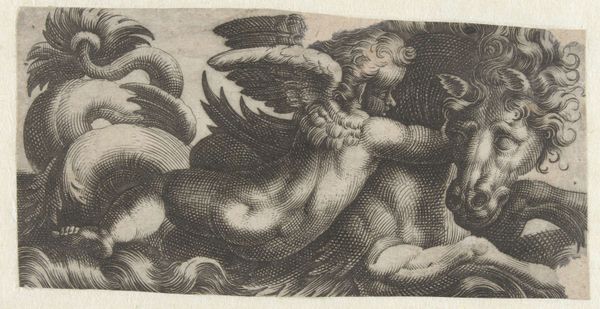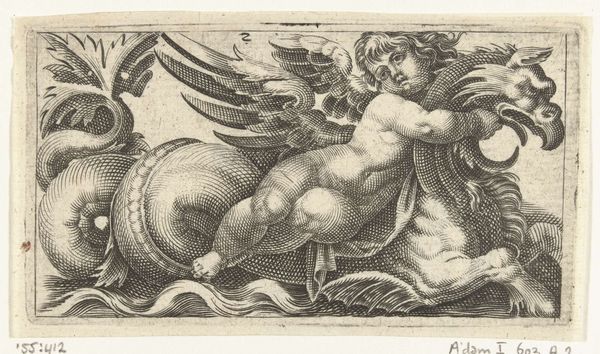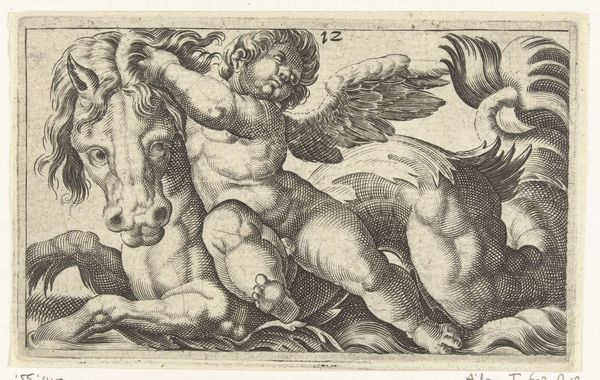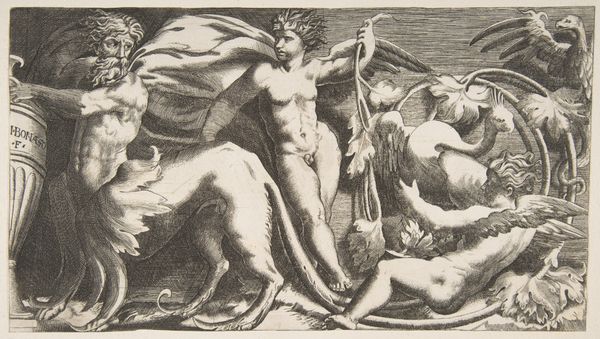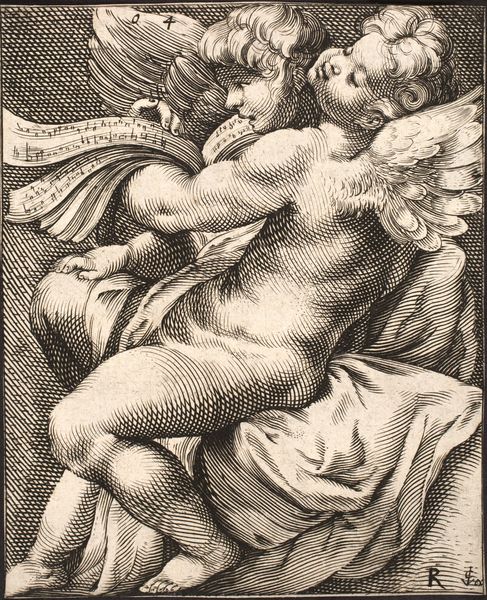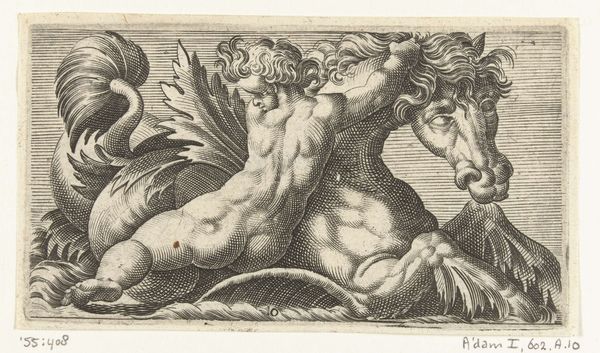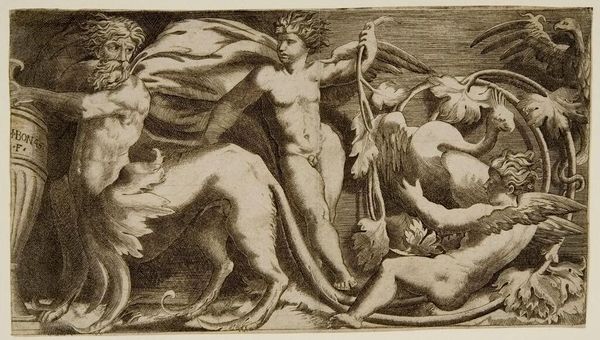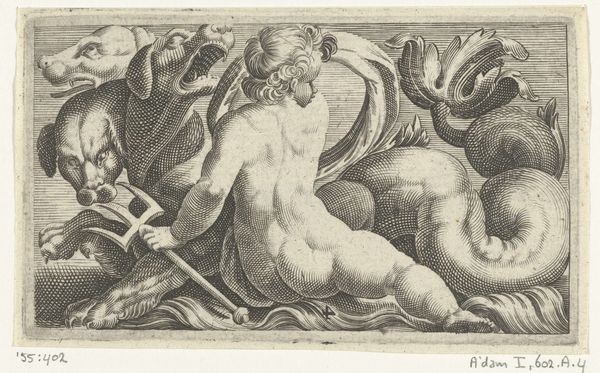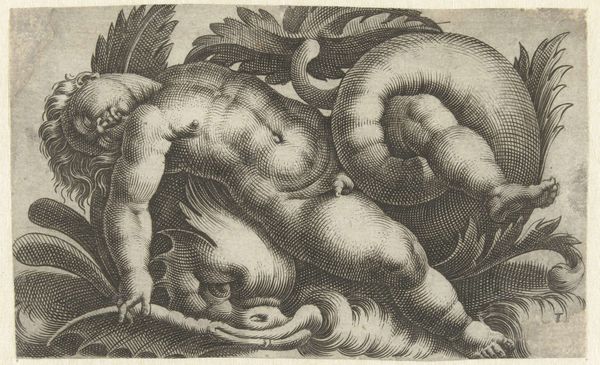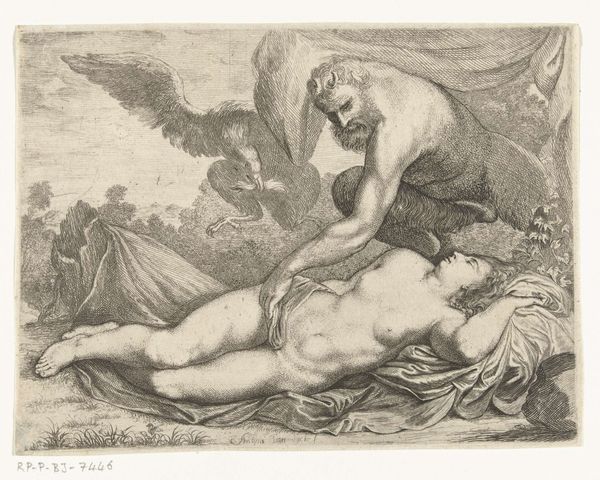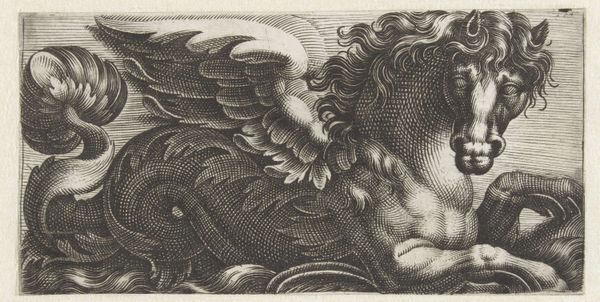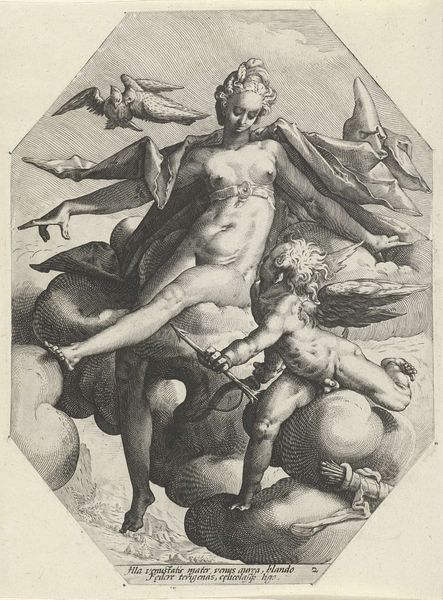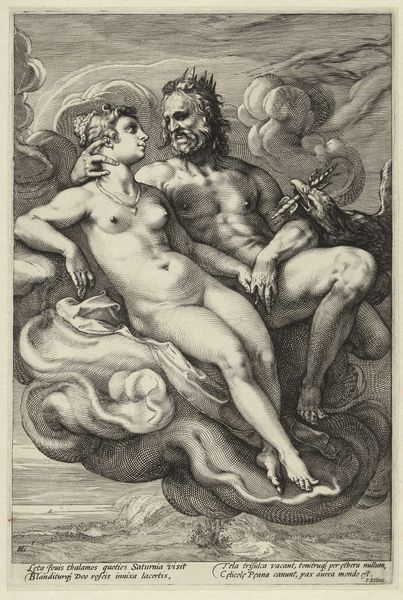
engraving
#
baroque
#
figuration
#
surrealism
#
mythology
#
line
#
history-painting
#
engraving
Dimensions: height 58 mm, width 118 mm
Copyright: Rijks Museum: Open Domain
Editor: Here we have Giovanni Andrea Maglioli’s “Putto voert een zeemonster een blad,” made sometime between 1580 and 1610. It’s an engraving, currently residing in the Rijksmuseum. The image presents a winged toddler, who I guess is supposed to be a putto, feeding foliage to a very strange looking sea monster. The contrast and detail is remarkable! What strikes you about it? Curator: What strikes me most is the juxtaposition of innocence and power, presented through the figures of the putto and the sea monster. How does this seemingly simple mythological scene play into larger socio-political narratives of the time? Editor: I never thought about that aspect! It feels so removed. Is there really something deeper? Curator: Well, consider the period: 16th-century Europe was rife with explorations of the 'New World.' The sea monster, a figure of both fear and wonder, could represent the 'other' – the foreign, the unknown. The putto, in feeding it, is an act of, perhaps, forced civility or attempted control. How does this reading resonate with you given what you know about that era? Editor: I can see that. It's not just a cute kid and a scary beast. There's the power dynamic too - like taming the unknown through cultural imposition or even, dare I say, a parallel to colonial interactions. It brings up difficult questions, definitely something I hadn’t initially picked up on. Curator: Precisely. Art of this era is never truly removed; it reflects the dominant ideologies and power structures. Reflect on how artists like Maglioli, through seemingly benign imagery, participated in shaping and perpetuating those narratives. What have you learned from that point? Editor: Thinking about the intersection of mythology, power, and colonial history in this little engraving completely changes how I see art from this period! I really had never stopped to think about how power is presented so explicitly. Curator: Agreed, it shows how historical context can reshape our understanding, inviting a more critical dialogue.
Comments
No comments
Be the first to comment and join the conversation on the ultimate creative platform.
